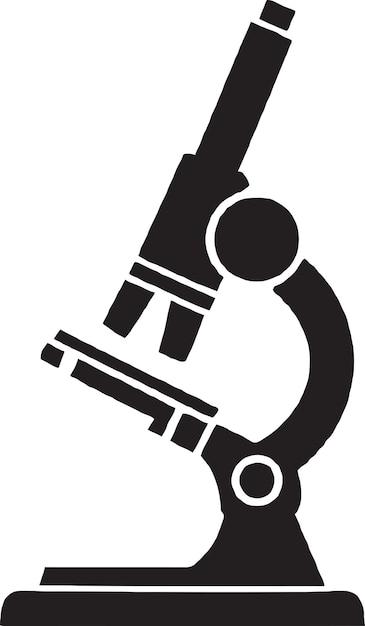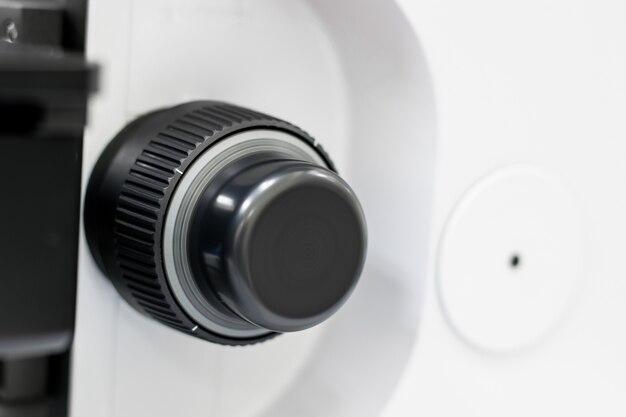In the world of microscopy, understanding the various components and functions of a microscope is essential to unlock the hidden wonders of the microscopic world. Two essential features of a microscope that play a crucial role in obtaining clear and magnified images are the coarse focus knob and the fine focus knob. But what exactly are the differences between these two? How do they affect the image quality? And why is it important to know about them?
In this blog post, we will delve into the fascinating realm of microscope focusing and explore the disparities between coarse focus and fine focus. We will discuss their distinct functionalities, impact on the specimen under examination, and their importance in achieving the desired level of magnification. So, let’s embark on this journey and unravel the secrets of microscope focus to enhance our scientific exploration in the year 2023 and beyond.

The Significance of Coarse and Fine Focus in Microscopy

What is the Difference Between Coarse Focus and Fine Focus?
When it comes to focusing, we aren’t just talking about cameras or binoculars. The art of focus is a skill we humans use every day, particularly when it comes to our eyesight. But what exactly is the difference between coarse focus and fine focus? Let’s dive into the nitty-gritty details of these focusing techniques.
Coarse Focus: A Blunt Approach
Coarse focus is like using a sledgehammer to crack a walnut – it’s the broad, rough, and no-nonsense way of bringing things into view. Imagine trying to find your keys in a cluttered drawer without your glasses on. You might grope around, moving things aside, hoping for a stroke of luck. This is the epitome of coarse focus.
Fine Focus: A Delicate Ballet
If coarse focus is the sledgehammer, then fine focus is the precision instrument that delicately handles the task at hand. It’s like using a scalpel to perform brain surgery or trying to thread a needle without squinting. Fine focus requires finesse, patience, and a sharp eye for detail.
The Key Differences Between Coarse and Fine Focus
One of the primary distinctions lies in their objectives. Coarse focus aims to quickly capture a general view, allowing us to identify shapes, colors, and rough outlines of objects. It’s ideal for scanning the environment and getting a sense of what’s happening around us.
On the other hand, fine focus is all about zooming in and analyzing the finer details. It sharpens the image, allowing us to see the intricacies, textures, and small nuances that might have otherwise gone unnoticed. Fine focus is the go-to technique for inspecting minute details or reading that tiny print on a prescription bottle.
How Our Eyes Handle the Focus Game
Our eyes are incredible organs that have evolved to handle both coarse and fine focus. The lens within our eyes plays a key role in this process. When we need to employ coarse focus, the lens changes shape, refracting light to help us see the larger picture.
When it’s time for fine focus, things get a bit more interesting. Tiny muscles around the lens contract or relax, tweaking the lens’s shape and curvature. This adjustment helps to bring objects into sharp focus at varying distances. Talk about eye gymnastics!
Knowing When to Use Each Technique
So, when should you use coarse focus versus fine focus? Well, it all boils down to the task at hand. If you’re trying to identify someone in a crowd or scanning a room for your misplaced glasses, coarse focus is your friend. It’s like taking a step back to see the big picture.
But when you’re trying to read that restaurant menu or admire the intricate brushstrokes in a painting, it’s time to switch gears and employ fine focus. This technique allows you to immerse yourself in the details and savor the finer things in life.
Coarse focus and fine focus are two sides of the same focusing coin. They may seem different, but they complement each other beautifully. Coarse focus gives us the broad strokes, while fine focus adds the tiny details. Understanding the distinction between the two can help us navigate the world with sharper vision and a greater appreciation for the wonders around us.
So next time you find yourself adjusting your focus, remember that it’s not just about your eyes – it’s about finding clarity in the way you perceive the world. Cheers to both coarse and fine focus, the dynamic duo of visual exploration!
FAQ: What is the difference between coarse focus and fine focus?
What is the difference between the coarse focus knob and the fine focus knob
The coarse focus and fine focus knobs are like the dynamic duo of the microscope world. They work together to bring your specimen into sharp focus. But what sets them apart? Let’s dive in, shall we?
Coarse Focus: The Rough and Tumble Fighter
The coarse focus knob is the burly bouncer of the focusing game. It’s the one you reach for when your specimen is way out of focus and needs a good shake-up. With its mighty power, it swiftly moves the objective lenses up and down, making large adjustments to the focus.
What happens to the specimen as you move it forward
Ah, the delicate dance between the microscope and the specimen. As you move the specimen forward, it gradually inches closer to the objective lenses. This means the distance between the specimen and the lenses decreases, allowing for a more detailed view. So, getting up close and personal has its perks!
Fine Focus: The Precision Artist
Now, let’s meet the fine focus knob. This suave and sophisticated knob takes over once the coarse focus has done its heavy lifting. Once your specimen is in the ballpark of sharpness, the fine focus steps in to make those tiny adjustments that bring out the fine details. It’s like the finishing touch of a master painter.
What microscope has the lowest magnification
If we’re talking about the lowest of the low when it comes to magnification, look no further than the humble and adorable handheld microscope. With its magnification power usually ranging from 20x to 100x, it may not bring the big guns, but it’s perfect for exploring the tiny wonders of the world.
What is the difference between coarse focus and fine focus
Ah, we’ve come full circle to this burning question. The difference between coarse focus and fine focus comes down to their respective roles in achieving that crystal-clear image. While coarse focus takes care of the heavy lifting and brings the specimen into focus, fine focus takes over to make those tiny tweaks for ultimate clarity.
Why do you think the objective lenses should be dust-free
Picture this: you’re peering through your microscope with excitement, ready to discover the secrets of the microscopic realm. But suddenly, you spot little dust particles clinging onto the objective lenses, obstructing your view like tiny hitchhikers. Not cool, right?
Keeping the objective lenses dust-free is crucial because microscopic particles can scatter light and create unwanted fuzziness in your image. So, keep those lenses clean and clear for a picture-perfect view of the microscopic wonders.
What total magnification will be achieved
Now, let’s talk magnification power! The total magnification achieved with a compound microscope depends on the combination of the ocular lens and the objective lens being used. In most standard microscopes, the ocular lens has a magnification power of 10x, and the objective lenses have varying powers, usually 4x, 10x, 40x, and 100x.
To calculate the total magnification, simply multiply the magnification power of the ocular lens by the magnification power of the objective lens. So, for example, if you’re using the 40x objective lens, your total magnification would be 10x (ocular lens) multiplied by 40x (objective lens), resulting in a total magnification of 400x. Now, that’s zooming in real close!
How does the letter E, as seen through the microscope, differ
Ah, the letter E, known for its constant flippability. Looking at the letter E through a microscope can be quite an adventure. When viewed normally, the E appears just as it does in our everyday life.
But when you peer at it through a microscope, be prepared for a jaw-dropping revelation. The letter E will appear inverted (upside down), my friend! Yes, the microscope has a way of playing tricks on our eyes. So, keep that in mind when deciphering the mysteries of the microscopic world.
Now, armed with the knowledge of the difference between coarse focus and fine focus, you’re ready to wield your microscope like a pro. Happy exploring, intrepid microscopist!
